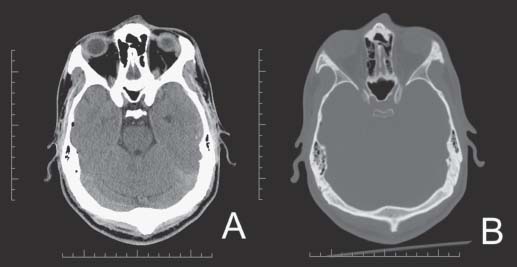Case 46 Mild Head Injury Fig. 46.1 (A) Noncontrasted head computed tomography scan showing a left temporal small contre-coup contusion in the brain window and (B) a right mastoid fracture with a small amount of pneumocephalus in the bone window.

 Clinical Presentation
Clinical Presentation
 Questions
Questions
 Answers
Answers
< div class='tao-gold-member'>
Only gold members can continue reading. Log In or Register to continue



